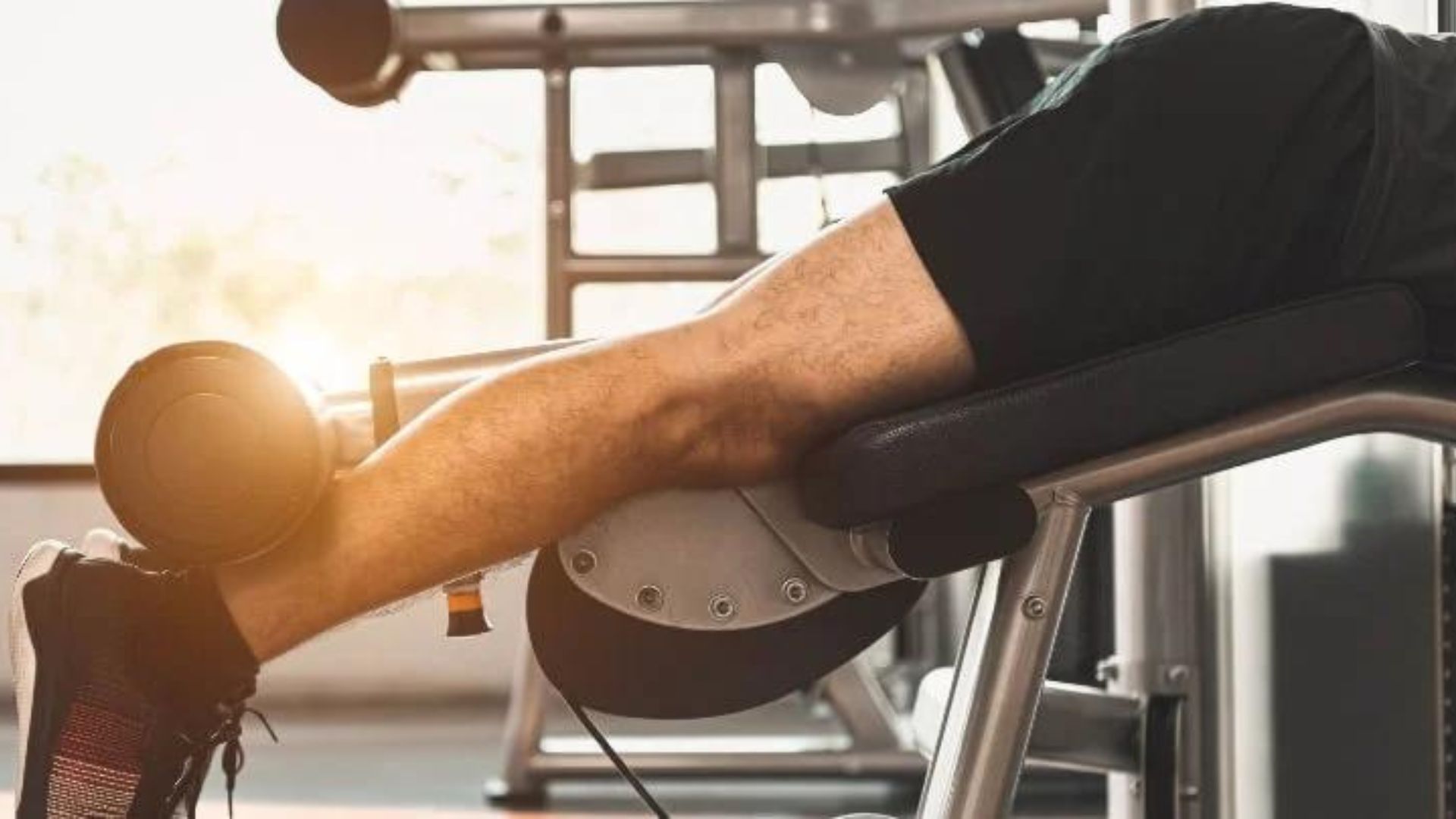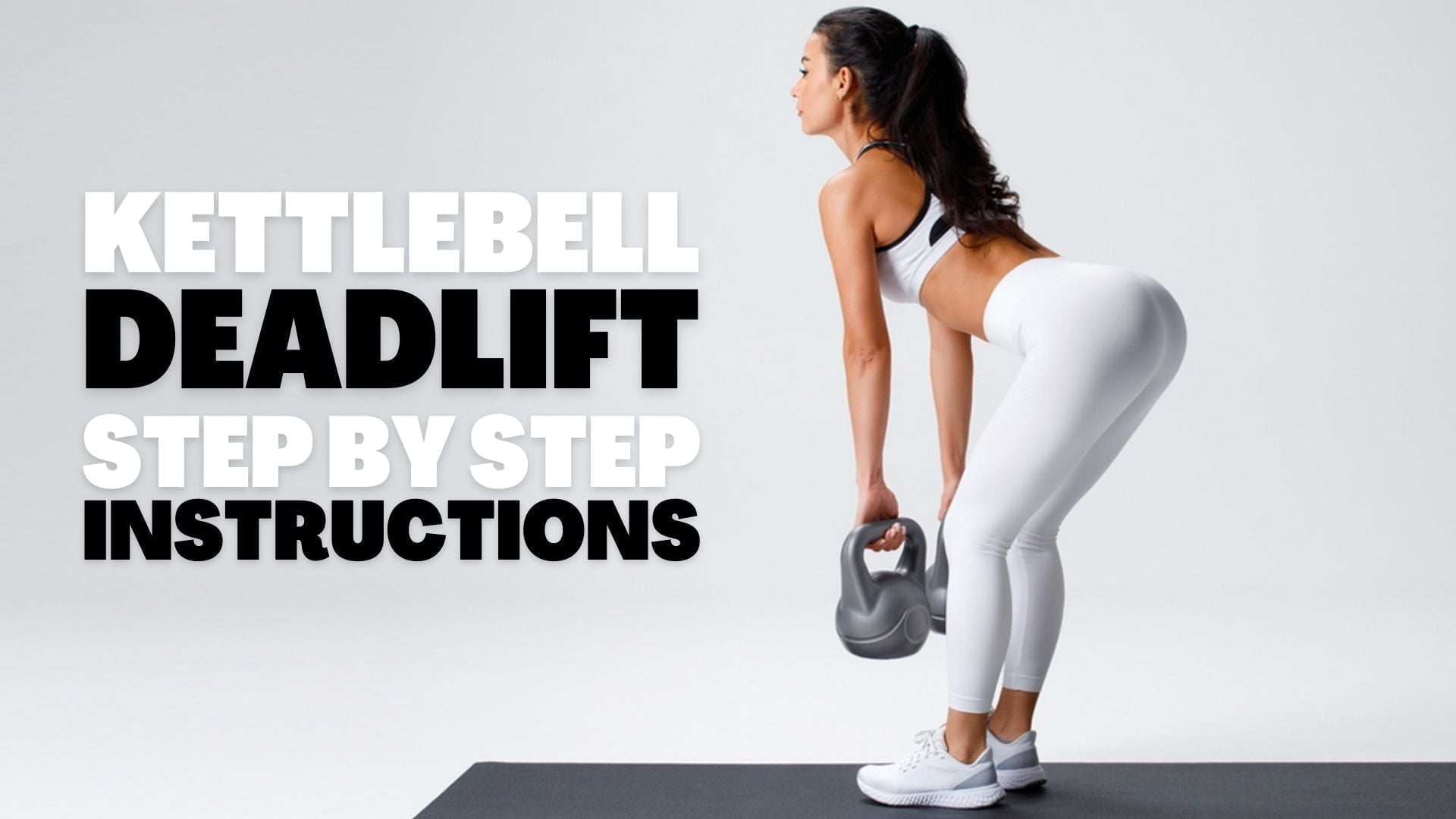
Kettlebell Deadlift: The Ultimate Full-Body Exercise!
Kettlebell deadlifts can be a great option for building muscle.
What Is The Kettlebell Deadlift?
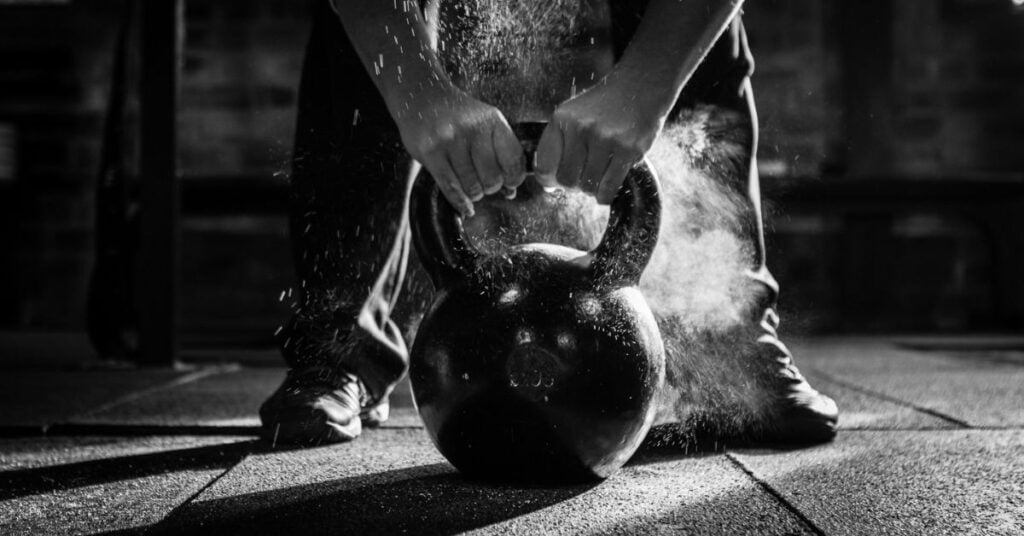
A kettlebell deadlift, a strength training exercise, uses a free weight called a kettlebell.
It’s a cast iron or steel ball with a handle at the top.
This deadlifting variant works both your upper and lower body muscles.
The kettlebell deadlift can be a great option for beginners who can progress to heavier weights.
How To Do A Kettlebell Deadlift
Start with 2-3 sets of 6-10 repetitions for the kettlebell deadlift.
Choosing a weight that will allow you to maintain good technique through all sets and repetitions would be best.
- Start by standing with the kettlebell in front of your face. The handle should be parallel to the ground to ensure that both your hands can grip the kettlebell handles. Your posture should be upright, with your feet hip-width apart. Your shoulders should rest directly above your hips, with your head and neck neutral. Your chin should be tucked during the movement. It is as though you are holding an egg under each chin. Your feet should have equal weight—Grap the floor with both feet to create a stable foot position. With your elbows slightly bent, your arms should be long and at your sides.
- With a good inhale, exhale, and pre-tension of your shoulders and hips. To lower your body towards the kettlebell, hinge from your hips.
- Hold the kettlebell with your two hands and rotate your arms so that your inner elbows face forward. Your chest should be higher than your hips and your shoulders higher than your chest. Your shins must be straight. This position should be used as a starting point for all repetitions.
- Maintain a neutral spine and move your kettlebell parallel to your lower legs. Then, push your feet up the floor by pushing your feet upwards.
- When you stand up, squeeze your glutes. Allow your hips to move forward. As if your pelvis were a bucket full of water, you try to keep the water from escaping the sides, front, and back.
- Your arms should be extended and your spine neutral. Your shoulders should cross over your hips at the end of every repetition.
- Keep the kettlebell in your hands and keep it close to your spine. Then, move the kettlebell downwards by bending your knees and hips. Your chest should be higher than your hips and your shoulders higher than your chest as you lower the kettlebell. Your shins must be straight.
- The kettlebell will reach the floor once it has reached the end of its cycle.
These are the three biggest mistakes people make when doing kettlebell workouts.
The kettlebell deadlift is one of those moves that’s not what it seems.
Although it might seem like the kettlebell deadlift works your upper body by lifting the bell off the ground with your hands, your lower body does the bulk of the lifting.
This can be a bit confusing, especially in terms of form.
When deadlifting with a kettlebell, you should focus on your core, glutes, and hamstrings.
Not your arms and shoulders.
People make some mistakes while making this movie that can cause problems.
Form.
This can change the weight distribution when the bell is lifted off the ground.
You are at risk of injury if you do a kettlebell deadlift incorrectly.
Here are some things to keep in mind when trying the move yourself:
- You should round your back when you bend over rather than keep your lower body flat. This increases your risk of pulling a muscle in the back.
- Instead of bending your knees and extending your chest, incline your hips, so your back is in a squat position.
- You can hurt yourself by bending your hips forward or extending your back too far.
You should feel the movement in your lower body, lower back, and legs if you are doing it correctly.
You may feel it in your spine or your quads. This could indicate that you are making a mistake.
Roxie Jones demonstrates how to deadlift with a kettlebell in this video.
You will be working all the right muscles without running the risk of hurting them.
Kettlebell Deadlift Benefits
#1 Full Body Activation Of Muscles
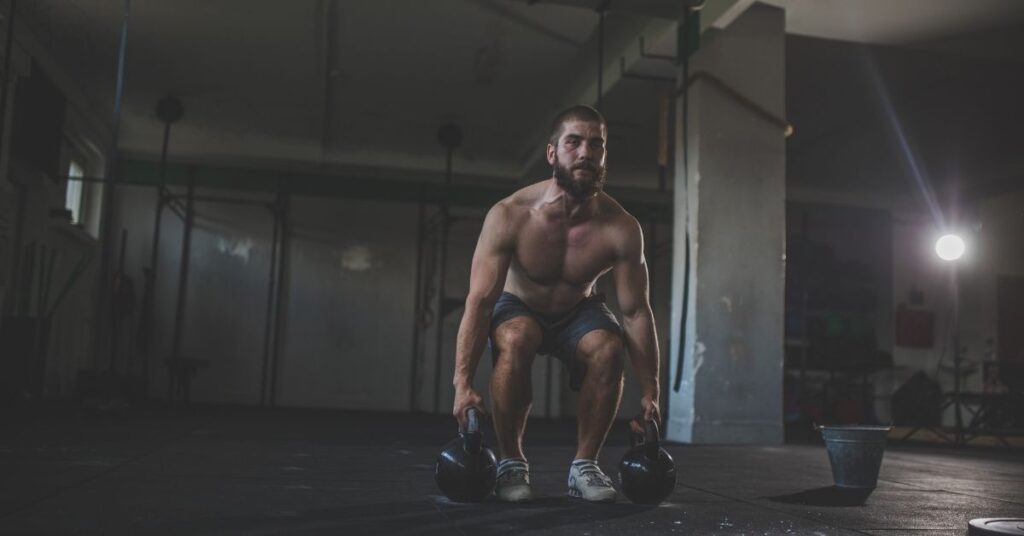
Deadlifting requires a lot of muscle strength.
This is the most powerful movement and helps lift heavy objects off the ground using power from our legs, core, and back muscles.
These are the muscles that were used to deadlift kettlebells:
- Quadriceps
- Hamstrings
- Glutes
- Adductors
- Erector Spinae
- Trapezius
- Lower back
- Forearms
- Core
Although many stabilizer muscles can be used with the kb-deadlift, these are the main movers.
#2 Improves Posture

Lifting the weight from the ground will require you to use the power of your Glutes and Hamstrings while keeping your back straight with the help of your core muscles.
The KB Deadlift is a great tool to counter the tendency to sit forward in an age when we are more likely to lean forwards.
It pulls everything backward, which opens up our chests and shoulders.
#3 Excellent For Fat Loss
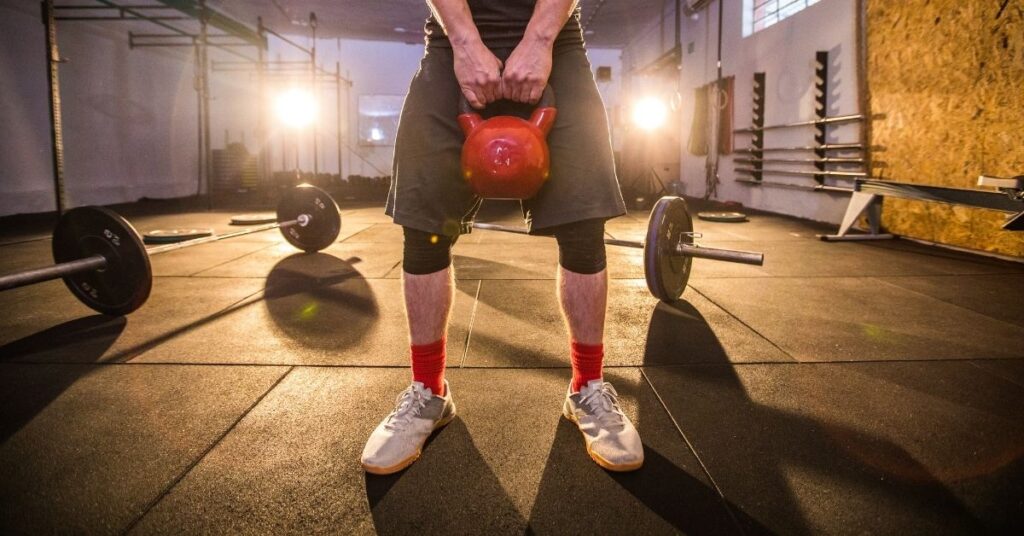
Deadlifts are one of the most energy-intensive exercises.
When exercising, it would be best to use more calories (or muscle mass).
Kettlebell Deadlift Variations
#1 Kettlebell Sumo Deadlift
This beginner’s deadlift variant uses both hands to hold the kettlebell.
This is a great way to learn basic hip hinges and condition your legs, hips, and glutes.
#2 Boxed Sumo Deadlift Using Kettlebell

After mastering the Sumo Deadlift technique, you can increase the depth and demand on your legs by lifting higher.
Two boxes should be placed under each foot.
The gap between the boxes allows the kettlebell to be closer to the ground.
If you have tight hamstrings, ensure you don’t compromise your back by making this move.
#3 Suitcase Deadlift One Kettlebell
Your core stabilizers will be further challenged by lifting the kettlebell off the side rather than between your legs.
The Suitcase Deadlift, a dynamic side plank that works into the side of your body, is, in effect, a Suitcase Deadlift.
#4 Suitcase Deadlift Two Kettlebells
Although the suitcase deadlift requires more effort from the legs, using two kettlebells will increase your core stability and make it harder to lift the suitcase.
This can be overcome by having different sizes of kettlebells in each hand.
Combining the suitcase deadlift and the kettlebell deadlift row is possible.
You would first perform the kettlebell rows while leaning forwards using a flat back.
Then, stand tall and complete the deadlift movement.
Row then deadlift, then row again.
#5 Single-Handed Deadlift
Single-handed deadlifts are performed from between your legs.
This naturally rotates the torso and increases core activation.
This exercise is great for preparing you to swing the kettlebells.
#6 Single Leg Deadlift One Kettlebell
This exercise will teach you to connect your top and bottom through the core muscles.
You will need to balance and core strength to do this exercise correctly.
Your Turkish Get up will show weakness, so work on your weaker side.
#7 Single Leg Deadlift Two Kettlebells
You can gain strength with kettlebells and the deadlift by performing the single-leg deadlift using two kettlebells but only one leg.
This exercise can be done on one leg and is very effective for increasing athletic strength.
Kettlebell Deadlift Vs. Traditional Deadlift

The traditional barbell and kettlebell deadlift activate many of the same muscles.
These include the quads and posterior chains, a group of muscles that runs down your lower back and includes the glutes, hamstrings, and calves.
The main differences between kettlebell deadlift and traditional deadlift are:
- Grip: You can perform the traditional deadlift using various grip techniques such as underhand or mixed grip. However, the kettlebell deadlift requires you to use an overhand grip with your palms facing your body. You can increase your grip strength by kettlebell training.
- Lifting style: Although both deadlift variants require a solid hip hinge pattern, there are some differences in how they are lifted. The kettlebell deadlift is different from the traditional deadlift. Instead of placing your hands outside your knees, you must place your hands between them. This activates your adductors (a group of muscles in the inner thigh).
- You can lift lighter weights: Kettlebells are lighter than barbells and will not cause you to worry about doing heavy deadlifts. You can also add kettlebells to other exercises such as squats.
How Does The Kettlebell Deadlift Works?
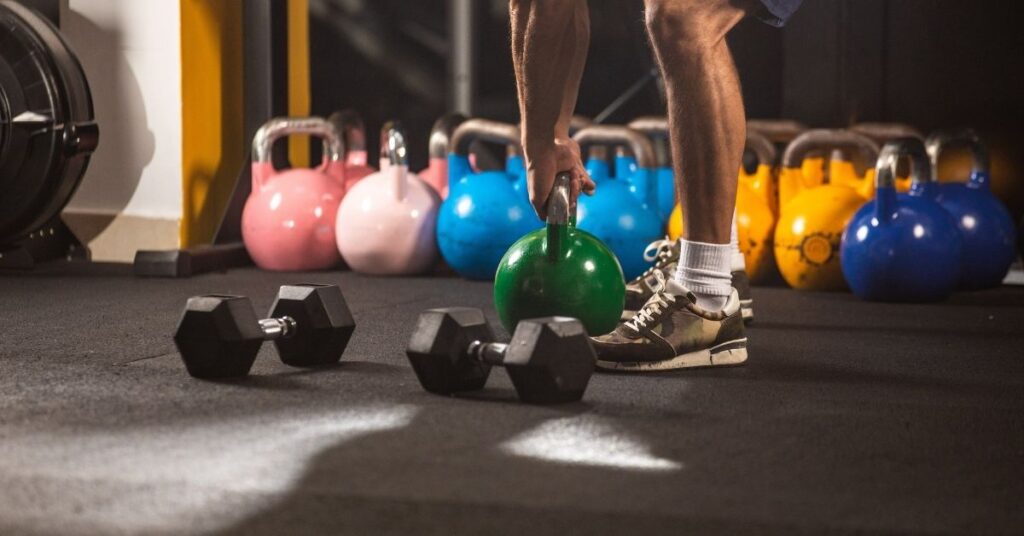
The kettlebell deadlift, a fundamental movement pattern, relies on the muscles in the legs and buttocks.
This exercise is often referred to as a posterior-chain exercise because it works the muscles in the back.
Are Kettlebell Deadlifts Effective?
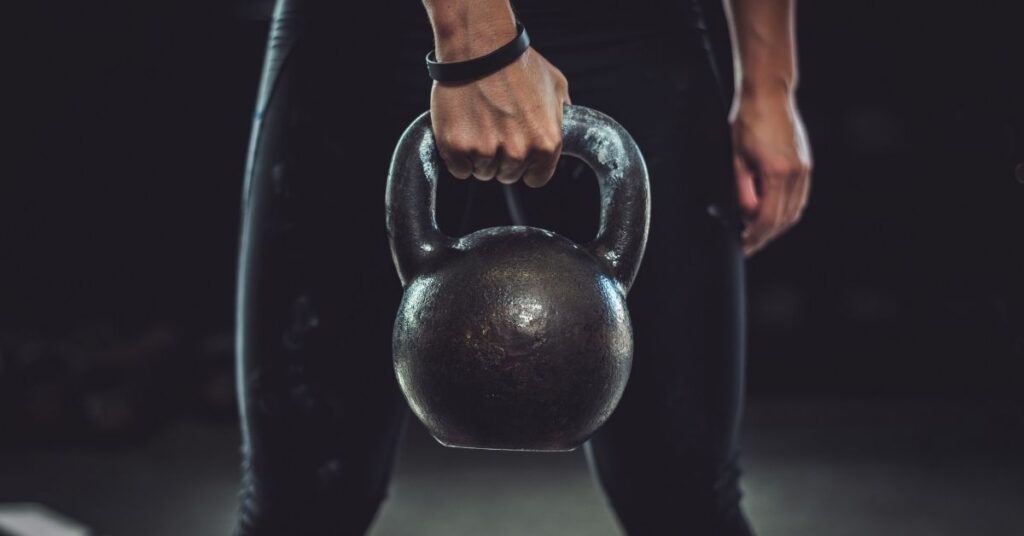
The kettlebell deadlift may be one of the best exercises for your entire body.
The exercise recruits 100 muscle groups, improves posture, challenges your cardio, and challenges you.
Is deadlifting better than squats
Different movements are used for the deadlift and squat.
The deadlift focuses more on the back, while the squat emphasizes the front and quads.
Both can be used to condition the entire body.









